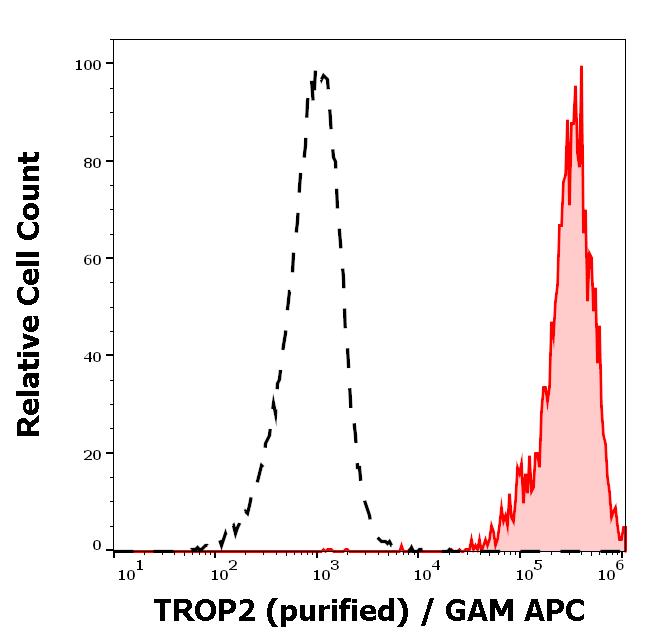Recombinant Human PH-Like Domain A2/PHLDA2/BWR1C/IPL/TSSC3 (C-6His)
Shipping Info:
For estimated delivery dates, please contact us at [email protected]
| Amount : | 50 µg |
| Content : | Lyophilized from a 0.2 µm filtered solution of 20mM Tris, 0.1M NaCl, 1mM DTT, pH 8.0. |
| Storage condition : | Lyophilized protein should be stored at -20°C, though stable at room temperature for 3 weeks. Reconstituted protein solution can be stored at 4-7°C for 2-7 days. Aliquots of reconstituted samples are stable at -20°C for 3 months. |
| AA sequence : | MKSPDEVLREGELEKRSDSLFQLWKKKRGVLTSDRLSLFPASPRARPKELRFHSILKVDCVERTGKYVYFTIVTTDHKEIDFRCAGESCWNAAIALALIDFQNRRALQDFRSRQERTAPAAPAEDAVAAAAAAPSEPSEPSRPSPQPKPRTPLEHHHHHH |
Source: E. coli.
MW :18.1kD.
Recombinant Human PHLDA2 is produced by our E.coli expression system and the target gene encoding Met1-Pro152 is expressed with a 6His tag at the C-terminus. Pleckstrin Homology-Like Domain Family A Member 2 (PHLDA2) is a peripheral membrane protein that belongs to the PHLDA2 family. PHLDA2 is expressed in the placenta and adult prostate gland. In the placenta, it is present in all cells of the villous cytotrophoblast. PHLDA2 plays a role in regulating placenta growth. PHLDA2 may act via its PH domain that competes with other PH domain-containing proteins, thereby preventing their binding to membrane lipids.
MW :18.1kD.
Recombinant Human PHLDA2 is produced by our E.coli expression system and the target gene encoding Met1-Pro152 is expressed with a 6His tag at the C-terminus. Pleckstrin Homology-Like Domain Family A Member 2 (PHLDA2) is a peripheral membrane protein that belongs to the PHLDA2 family. PHLDA2 is expressed in the placenta and adult prostate gland. In the placenta, it is present in all cells of the villous cytotrophoblast. PHLDA2 plays a role in regulating placenta growth. PHLDA2 may act via its PH domain that competes with other PH domain-containing proteins, thereby preventing their binding to membrane lipids.
Always centrifuge tubes before opening. Do not mix by vortex or pipetting. It is not recommended to reconstitute to a concentration less than 100 µg/ml. Dissolve the lyophilized protein in ddH2O. Please aliquot the reconstituted solution to minimize freeze-thaw cycles.
Endotoxin : Less than 0.1 ng/µg (1 IEU/µg) as determined by LAL test.
For Research Use Only. Not for use in diagnostic/therapeutics procedures.
| Subcellular location: | Cytoplasm, Membrane |
| Tissue Specificity: | Expressed in placenta and adult prostate gland. In placenta, it is present in all cells of the villous cytotrophoblast. The protein is absent in cells from hydatidiform moles. Hydatidiform mole is a gestation characterized by abnormal development of both fetus and trophoblast. The majority of hydatidiform moles are associated with an excess of paternal to maternal genomes and are likely to result from the abnormal expression of imprinted genes (at protein level). Expressed at low levels in adult liver and lung, and fetal liver. Expressed in adult brain and neuroblastoma, medullablastoma and glioblastoma cell lines. |
| BioGrid: | 113113. 3 interactions. |
|
There are currently no product reviews
|



















.png)









